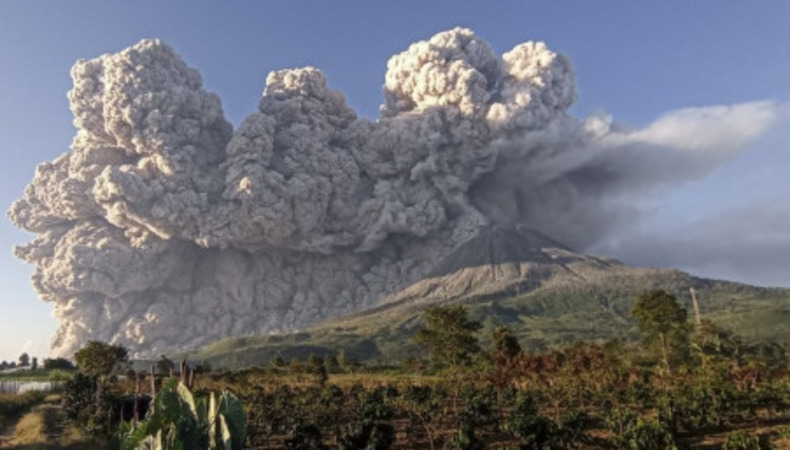Indonesia: 11 Dead in Marapi Volcano Eruption

Indonesia’s Mount Marapi volcano Sunday eruption has left 11 climbers dead and scores more are stranded. The 2,891 metre-high volcano on Sumatra threw ash, white-and-gray ash plumes, as high as three kilometers into the air, hot ash clouds spread over several kilometers.
The eruption stranded 75 climbers, who had made their up to the mountain on Saturday, injured several. They sustained burn injuries and one had a broken limb. Rescuers evacuated the climbers, their faces and hair smeared with volcanic dust and rain.
Authorities advised villagers to wear eyeglasses to protect them from volcanic ash as falling ash blanketed several villages and blocked sunlight.
Climbers Shouldn’t Have Been on Marapi Volcano
Hendra Gunawan, the head of the Center for Volcanology and Geological Disaster Mitigation, said Marapi has stayed at the third highest of four alert levels since 2011. This level indicates above normal volcanic activity and prohibits climbers or villagers within 3km of the mount’s peak.
“This means that there should be no climbing to the peak. Climbers were only allowed below the danger zone. But sometimes many of them broke the rules to fulfill their satisfaction to climb further.”
But an official at the local Search and Rescue Agency in Padang said all of the climbers had registered at two command posts or online through West Sumatra’s conservation agency before they climbed. Hari Agustian said it was possible that some climbers took illegal roads or local residents were active in the area. But this cannot be confirmed.
He said Sunday’s eruption was not preceded by a significant increase in volcanic earthquakes. “Deep volcanic earthquakes were only recorded three times between November 16 and on Sunday. The eruption process is taking place quickly and the center of pressure is very shallow, around the peak.”
Keep Reading
First Destroy, Then Build: US Looks at Gaza Solemnly
Not Terrorism, Couple Killed in Explosion Near Canada-US Border
Marapi Eruptions Sudden
Gunawan highlighted that Marapi has been observed regularly, erupting since 2004 with a gap of two to four years. “Marapi eruptions are always sudden and difficult to detect using equipment because the source is near the surface.”
The volcanologist said this eruption was not caused by the movement of magma. Marapi is one of the more than 120 active volcanoes in Indonesia. Eruption at Marapi is still ongoing.




